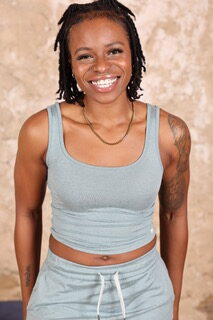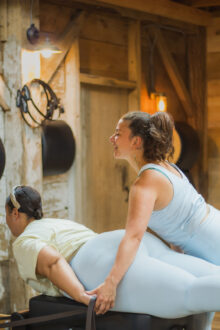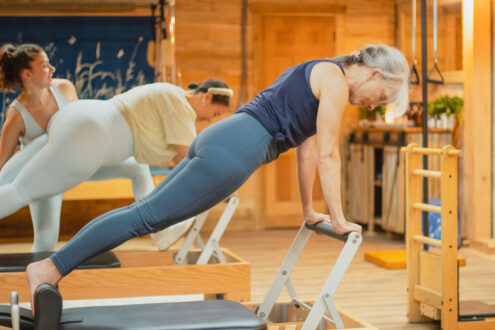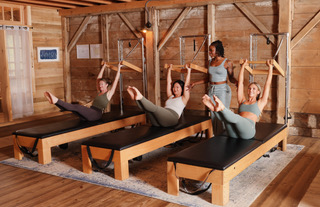By Cheréa “Ray” Hatcher, Peak Pilates ® Level 2 Graduate
“Every person in the world should do Pilates,” said Joseph Pilates, the creator of the practice that bears his name. While mat work forms the foundation of the method, many early students struggled with it. To make the exercises more accessible, Pilates created specialized equipment—laying the groundwork for the diverse and adaptable practice we know today.
 A Legacy Rooted in Access
A Legacy Rooted in Access
In 1964, during the peak of the U.S. Civil Rights Movement, two young women of color—Kathleen Grant and Lolita San Miguel—completed 2,200 hours of training and became the only individuals Joseph Pilates personally certified to teach his work. Their achievement is more than historical trivia; it’s a reminder that inclusion and accessibility were always part of the Pilates philosophy.
Fast forward to 2025, and the industry is booming once again. A survey by Balanced Body found that 77% of Pilates studios are growing, and 67% are regularly selling out classes. With popularity on the rise, we must ask ourselves: Are we remaining true to the inclusive spirit Joseph Pilates embodied?
Are We Creating Truly Inclusive Studios?
Beyond creative cueing and beautiful movement, what defines a strong Pilates instructor today? More importantly, are we cultivating spaces where everyone feels embraced?
It’s easy to fall into routine—teaching what we’ve always taught to the clients we’re used to seeing. But if we don’t consciously examine who’s in the room, who’s missing, and why, we risk reinforcing long-standing stereotypes about who Pilates is “for.”
Know Your Students, Deepen Their Practice
Understanding your students—where they’re coming from, what their bodies need, and how their identities shape their experience—is essential. As Ivy Baron, owner of Requisite Pilates in Austin, Texas, explains “A good Pilates instructor should offer modifications and supports to make the exercises effective for all participants.”
The key is knowing whether those modifications actually create access—or just look good. Effective teaching means adapting movement in a way that makes the work meaningful for every individual body, not just the “ideal” form.
Dismantling Harmful Narratives
It’s also our job to stop and reframe studio conversations that idolize thinness or promote exclusionary ideals. Pilates isn’t for one body type—it’s for every body. That includes people of all sizes, backgrounds, gender identities, and abilities.
Sofia Engelman, owner of Queer Body Pilates in Brooklyn, put it simply: “Pilates is incredibly adaptable. A lot of the things we’re working on in a class really should look different on every body.”
Celebrating this adaptability is essential. It invites broader participation and affirms that each person belongs.
Breaking Barriers in the Industry
Historically, Pilates has been perceived as a space reserved for wealthy white women—and occasionally, white men. But the tides are shifting. Organizations like Peak Pilates ® and Balanced Body are investing in scholarship programs to remove financial and structural barriers to entry.
These programs not only help aspiring instructors of color get certified, but they also pave the way for Pilates to reach new communities—diversifying the student base in a lasting, meaningful way.
The Work Ahead
As instructors and studio owners, we have the power—and responsibility—to expand the reach of our work. Ask yourself:
- Can I offer classes or community programs in more diverse areas?
- Am I making pricing, language, and studio culture accessible to a wider range of people?
- Are there biases—spoken or unspoken—within my space that need to be addressed?
At a time when many marginalized groups are under increased scrutiny, wellness spaces must serve as sanctuaries. We cannot allow Pilates to remain part of a larger narrative of exclusion.

Inclusion Is a Practice
Upholding the original values of Pilates means doing more than perfecting movement. It means examining our own practices, expanding our reach, and making sure that everybody is seen, supported, and celebrated.
If we want Pilates to remain relevant and transformative, we must continually ask: Are we making space—or taking it up? Are we replicating old barriers, or removing them?
This is the real work. And it’s worth doing
Join us virtually Wednesday June 11th, to keep this conversation going at our upcoming virtual CEC: Cultivating Inclusive Movement Spaces. Join Level 3 MI, Charlotte Rosen, author Cheréa “Ray” Hatcher, and additional Peak Pilates ® alumni Jessi Perna-Elias for an interactive virtual CEC aimed at creating a space for you to think deeper on these questions and inquire and brainstorm possible pathways of more inclusive movement spaces through your own teaching or studio practices. If you are teaching Pilates, you are carrying out the legacy of a movement industry changemaker who believed vital health should be available and accessible to all. Stay true to this mission by attending this workshop! Teachers of all fitness modalities are welcome to attend this workshop.
When: Wednesday June 11th, 3:00pm- 5:00pm EDT
Where: Virtual Live or get the recording for up to two weeks after live event
Investment: $35
In North America and Asia: Reserve your spot here
In Europe and Middle East: Reserve your spot here



